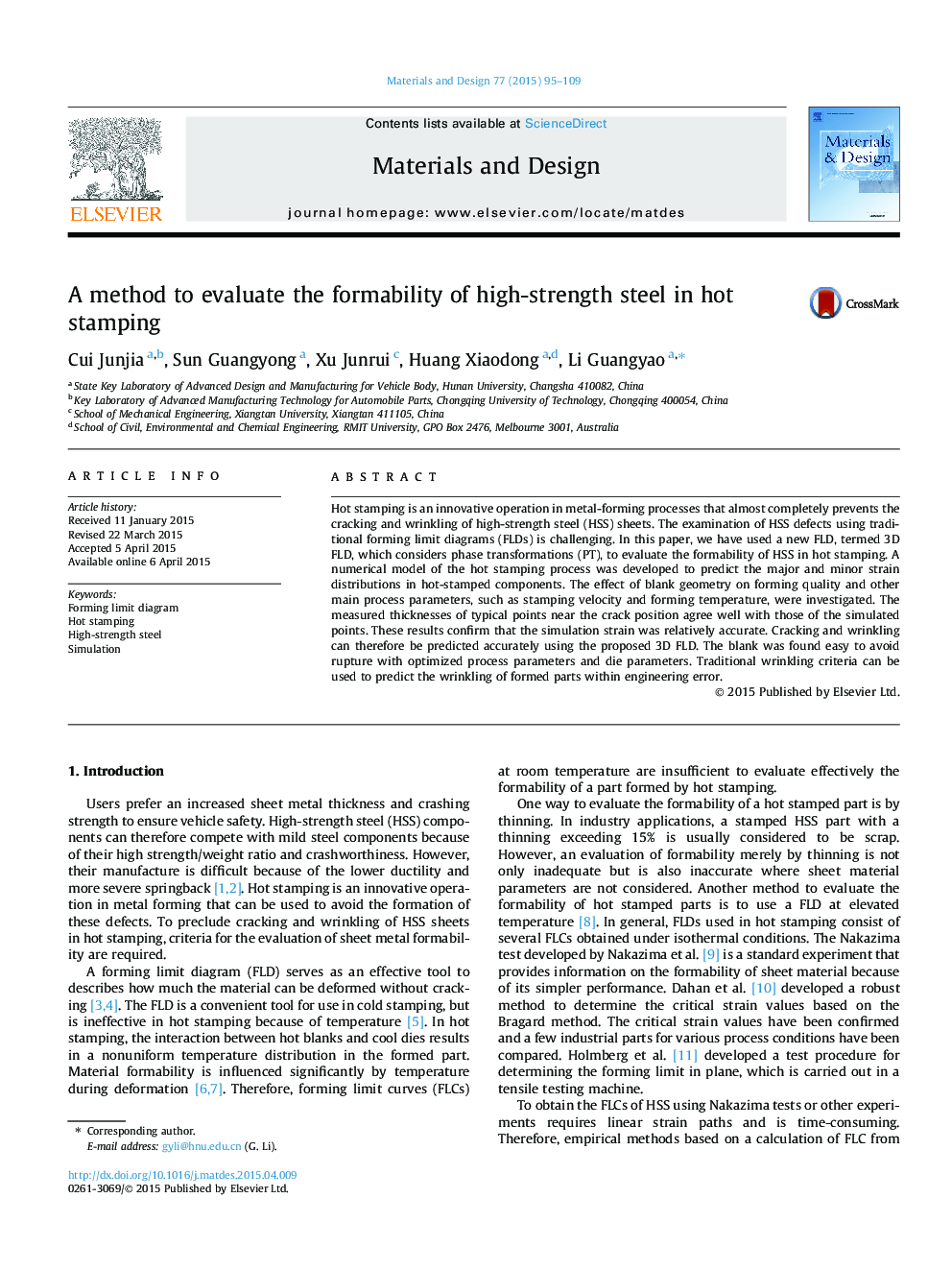| کد مقاله | کد نشریه | سال انتشار | مقاله انگلیسی | نسخه تمام متن |
|---|---|---|---|---|
| 828589 | 1470320 | 2015 | 15 صفحه PDF | دانلود رایگان |
• A novel forming limit diagram named 3D FLD is used to evaluate the formability of HSS in hot stamping.
• The effect of strain path considering temperature on the sheet formability is investigated.
• Traditional wrinkling criterion can be employed to predict the wrinkling of the formed part in hot stamping.
Hot stamping is an innovative operation in metal-forming processes that almost completely prevents the cracking and wrinkling of high-strength steel (HSS) sheets. The examination of HSS defects using traditional forming limit diagrams (FLDs) is challenging. In this paper, we have used a new FLD, termed 3D FLD, which considers phase transformations (PT), to evaluate the formability of HSS in hot stamping. A numerical model of the hot stamping process was developed to predict the major and minor strain distributions in hot-stamped components. The effect of blank geometry on forming quality and other main process parameters, such as stamping velocity and forming temperature, were investigated. The measured thicknesses of typical points near the crack position agree well with those of the simulated points. These results confirm that the simulation strain was relatively accurate. Cracking and wrinkling can therefore be predicted accurately using the proposed 3D FLD. The blank was found easy to avoid rupture with optimized process parameters and die parameters. Traditional wrinkling criteria can be used to predict the wrinkling of formed parts within engineering error.
Figure optionsDownload as PowerPoint slide
Journal: Materials & Design - Volume 77, 15 July 2015, Pages 95–109
